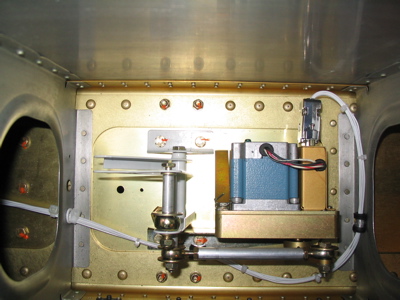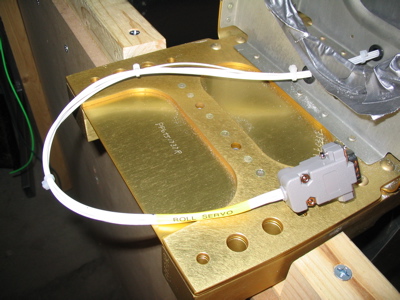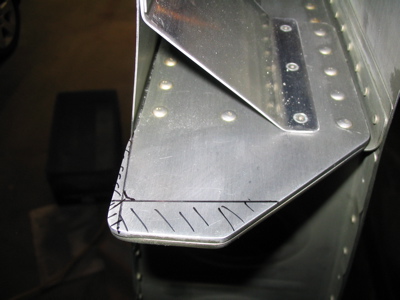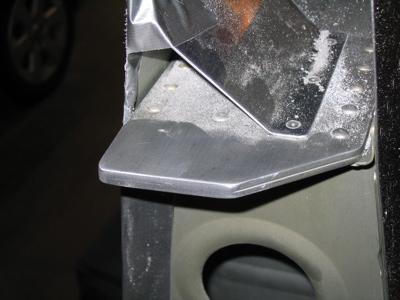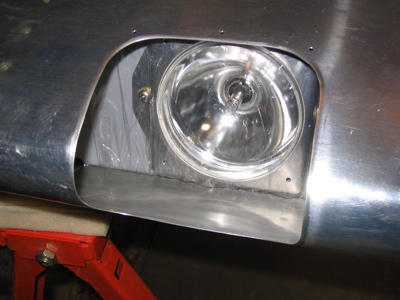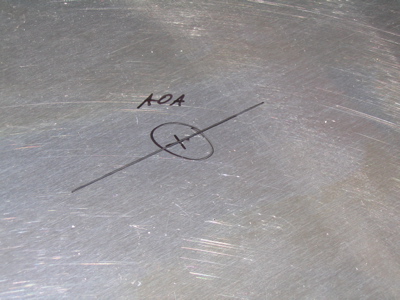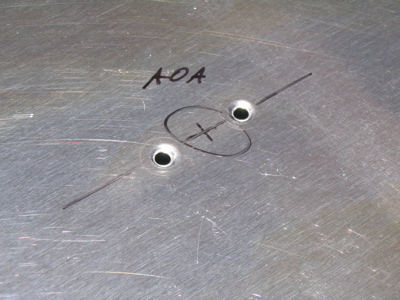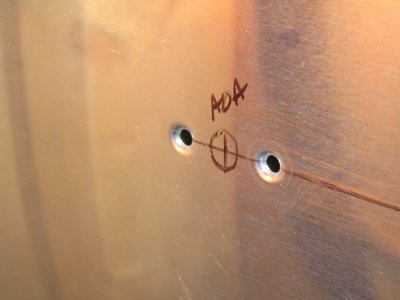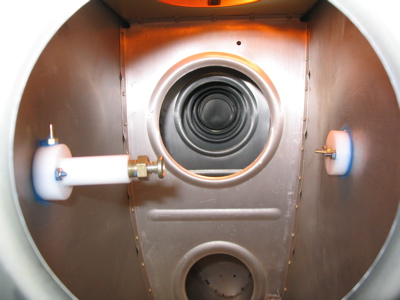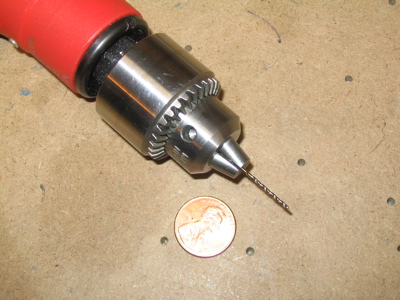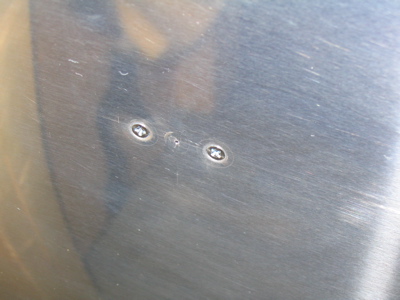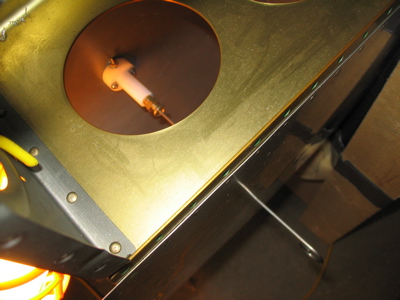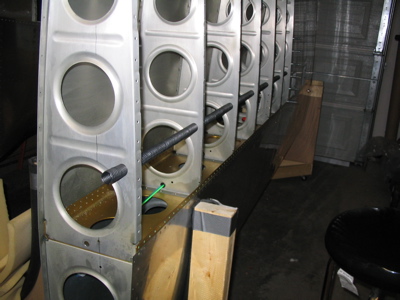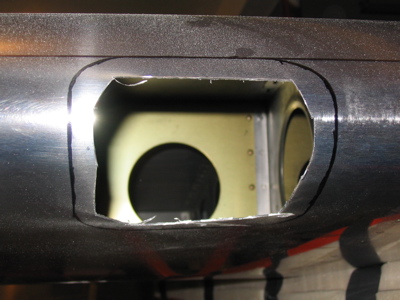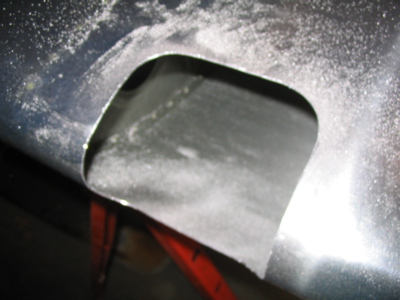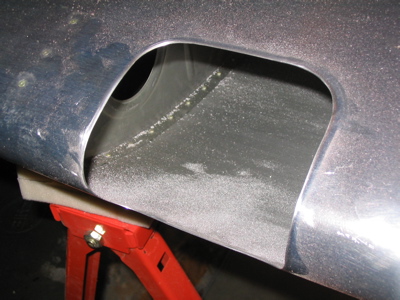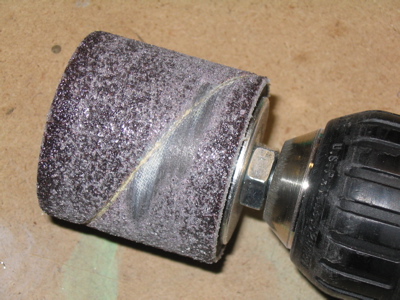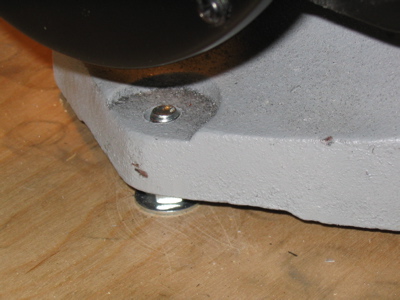With Mary's help, I lifted the left wing out of the cradle and onto a pair of padded sawhorses this morning. Then I cleaned the poor dirty wing with soapy water – the top side was still covered with the preservative oil that's applied to the Quickbuild kits at the assembly site. Now it's all nice and shiny on top where I couldn't reach before. There are also some light scuff marks where the wings rubbed against their straps in the truck – but since I plan to have this airplane painted eventually, no need to worry about polishing them out.
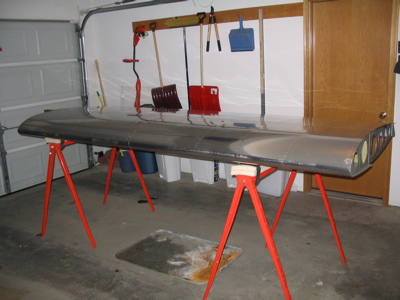
Then I got out one of the Duckworks landing light kits I bought last month. I popped for the HID xenon lamps, since I have the same type of headlights on my Toyota and I really like them. These lights are expensive, but I'll hopefully never have a problem with nighttime visibility at those dark country strips, and these bulbs will probably last longer than the airplane's engine.
Here's what you get for your money:
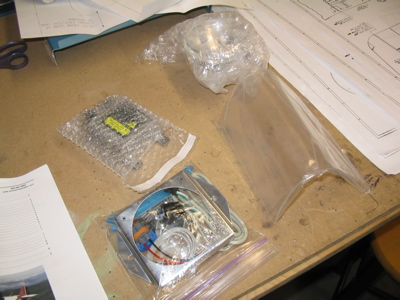
The first step is to measure and then tape the included template to the leading edge, over the outboard-most rib bay:
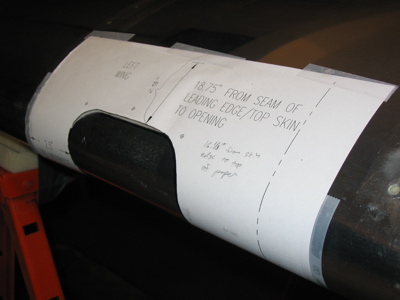
The shape of the landing light cutout is then traced onto the wing. Hacking a huge hole in the front of my beautiful wing was a little scary to think about, so I sort of stared at it for a while before continuing to the next step, doing a mental tally of my accumulated karma.
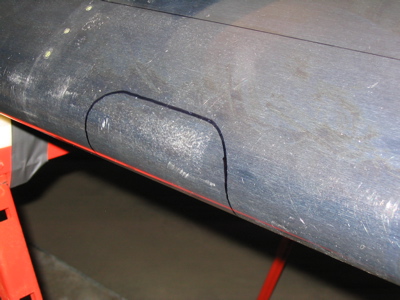
Well, no going back now! I'm going to have a landing light whether I like it or not. The initial cuts were made with a fiber cutoff wheel in my Dremel tool. This and subsequent steps produce a lot of airborne aluminum dust, so I had a dust mask on for all of this.
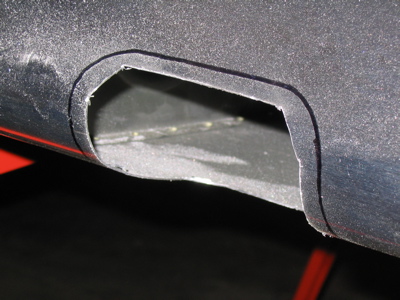
Next I enlarged the hole up to the lines with a 2" drum sander in my electric drill. This turned out to be an excellent way to do this job, since it made nice round corners and didn't take material off too fast to control.
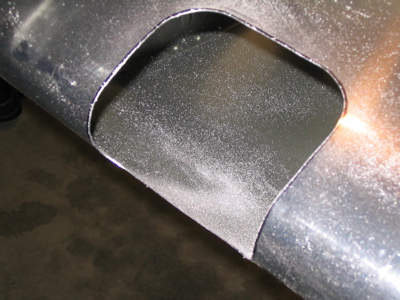
After the basic cutout was there, I attacked it with files to finish off the shape, and went over it with a 1" Scotchbrite wheel to smooth up the edges. For all the worrying I did about getting this cutout to come out right, I think it turned out rather well.
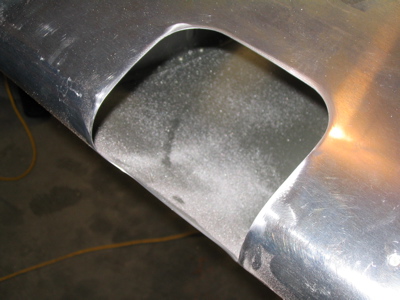
The lens is held onto the wing with screws that go into two little retainer strips behind the plexiglass. Here I'm match drilling the retainer strips to the skin:
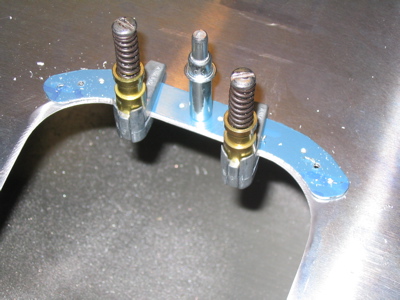
I went ahead and put the nutplates on without priming the strips. They are removable and non-structural, and they aren't in contact with anything but plexiglass, so I'm not worried about corrosion here.
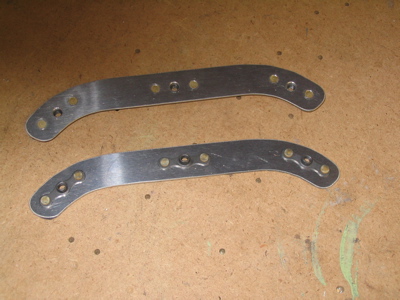
The instructions leave it up to the builder as to where the HID ballast is installed. I elected to bolt it right to the mounting plate that holds the bulb, instead of trying to mount it to the rib somehow. The available space on the mounting plate is tight but it's doable. I oriented the connectors outboard so they can protrude through the lightening hole in the outboard rib. (I think this is actually the only orientation that will let everything fit)
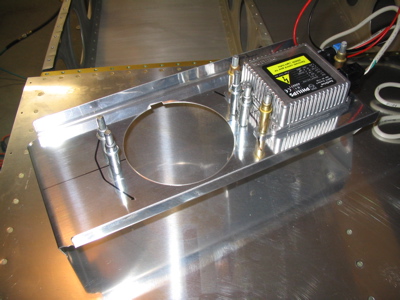
The mounting plate then got primed, along with some pitot mounting hardware.
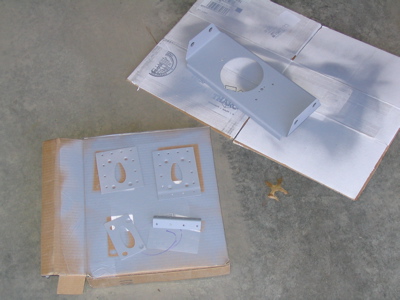
Two nutplates on each rib hold the light mounting plate. The holes in the plate are oversized so you can wiggle it around to aim the light.
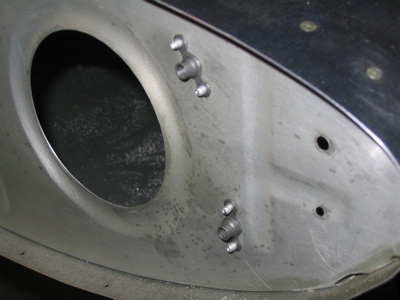
Behold: bulb and ballast bolted beautifully.
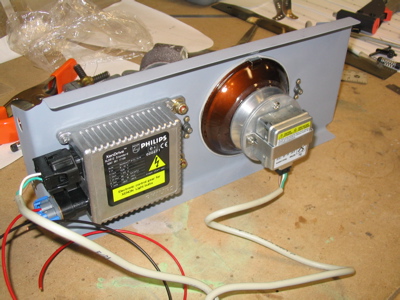
I decided not to prime the light retainer ring either – the bare metal look makes the bulb seem shinier! Also note that the bolt heads for the ballast just clear the retainer ring's "ears".
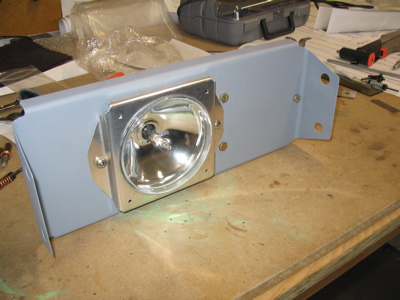
It works! I hooked it up to my bench power supply to gauge the current draw, which started out at around 7 amps and dropped to 5 after a few seconds of running. And boy, is it ever buh-right. This picture doesn't do it justice. I had the garage door closed and all the lights turned off, and this sucker made it seem like the sun was shining. Awesome.
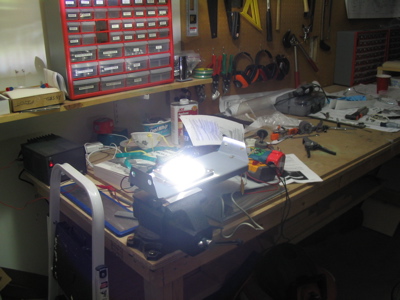
I secured the length of wire that goes between the bulb and ballast with an adel clamp and some tie wraps. I also put some cellophane over the lens to protect it from fingerprints during installation – fingerprints leads to hot spots leads to shortened bulb life. (which is why I had rubber gloves on when I installed the retainer ring)
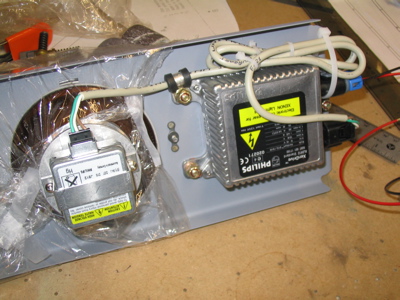
Here it is mounted in the wing. The electrical connectors do indeed protrude through the lightening hole, just as I planned. Excellent.
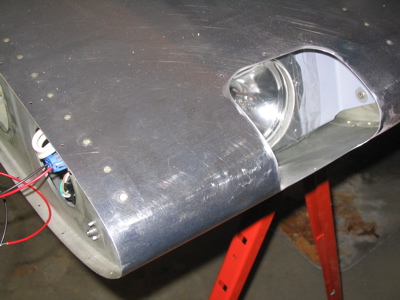
I'm stuck on this mini-project until I can get ahold of some plexiglass drill bits from Avery, but that's okay because I'm not likely to have much time to work on it before next weekend anyway.
Parts update: Still waiting on replacement electrical conduit from Van's. Slowest shipping ever.
